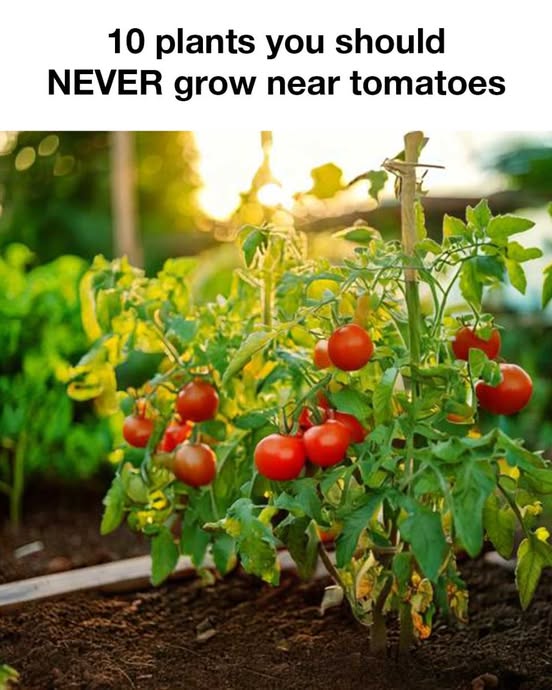
Companion planting is a time-tested gardening technique that involves growing different plants together to enhance growth, deter pests, and maximize space. Some plants thrive when placed near tomatoes, while others can hinder their growth. Knowing which plants to avoid planting near tomatoes is crucial for a productive and healthy garden.
Understanding Tomato Plant Needs
Tomatoes flourish in warm, sunny environments with well-drained, nutrient-rich soil. They require consistent watering and essential nutrients such as nitrogen, phosphorus, and potassium for optimal growth. However, certain plants can compete for these resources, attract pests, or even release chemicals that inhibit tomato growth.
Plants That Compete for Nutrients
Tomatoes are heavy feeders, meaning they require ample nutrients from the soil. Some plants can compete with them, leading to stunted growth and lower yields:
- Corn: Absorbs large amounts of nitrogen, leaving less for tomatoes.
- Eggplant & Peppers: Belonging to the same nightshade family, they can overtax the soil’s nutrients.
Plants That Attract Harmful Pests
Certain plants can lure pests that negatively impact tomato plants:
- Fennel: Attracts aphids and other insects that can spread to tomatoes.
- Cabbage, Broccoli, & Cauliflower: Members of the brassica family that attract cabbage worms and whiteflies.
Plants That Inhibit Tomato Growth
Some plants can stunt tomato growth due to competition or the release of chemicals:
- Black Walnut Trees: Release a compound called juglone that can prevent tomatoes from thriving.
- Dill: If planted too closely, dill can compete with tomatoes for space and nutrients.
Plants That Require Different Growing Conditions
Growing plants with conflicting needs can cause problems for tomatoes:
- Potatoes: Susceptible to blight, which can easily spread to tomatoes.
- Carrots: Compete with tomatoes for underground space, potentially affecting root development.
Plants That Shade Tomatoes
Tomatoes need full sun for high yields, but certain tall plants can block sunlight:
- Sunflowers: Grow tall and cast shade, reducing the tomatoes’ access to sunlight.
- Pole Beans: Can create dense foliage, limiting airflow and increasing disease risk.
Plants That Compete for Water
Tomatoes require consistent moisture, and water-hungry plants can create stress:
- Cucumbers: Have similar water needs and can compete for moisture, especially in dry conditions.
- Squash & Melons: Spread rapidly and take up a significant amount of water and space.
Conclusion: Cultivating a Thriving Tomato Garden
Creating a well-balanced garden requires understanding plant interactions. By avoiding incompatible plants, you can help tomatoes grow strong, remain pest-free, and produce a bountiful harvest. Strategic companion planting allows for natural pest control, improved soil health, and optimized growth conditions, ensuring a flourishing and productive garden.